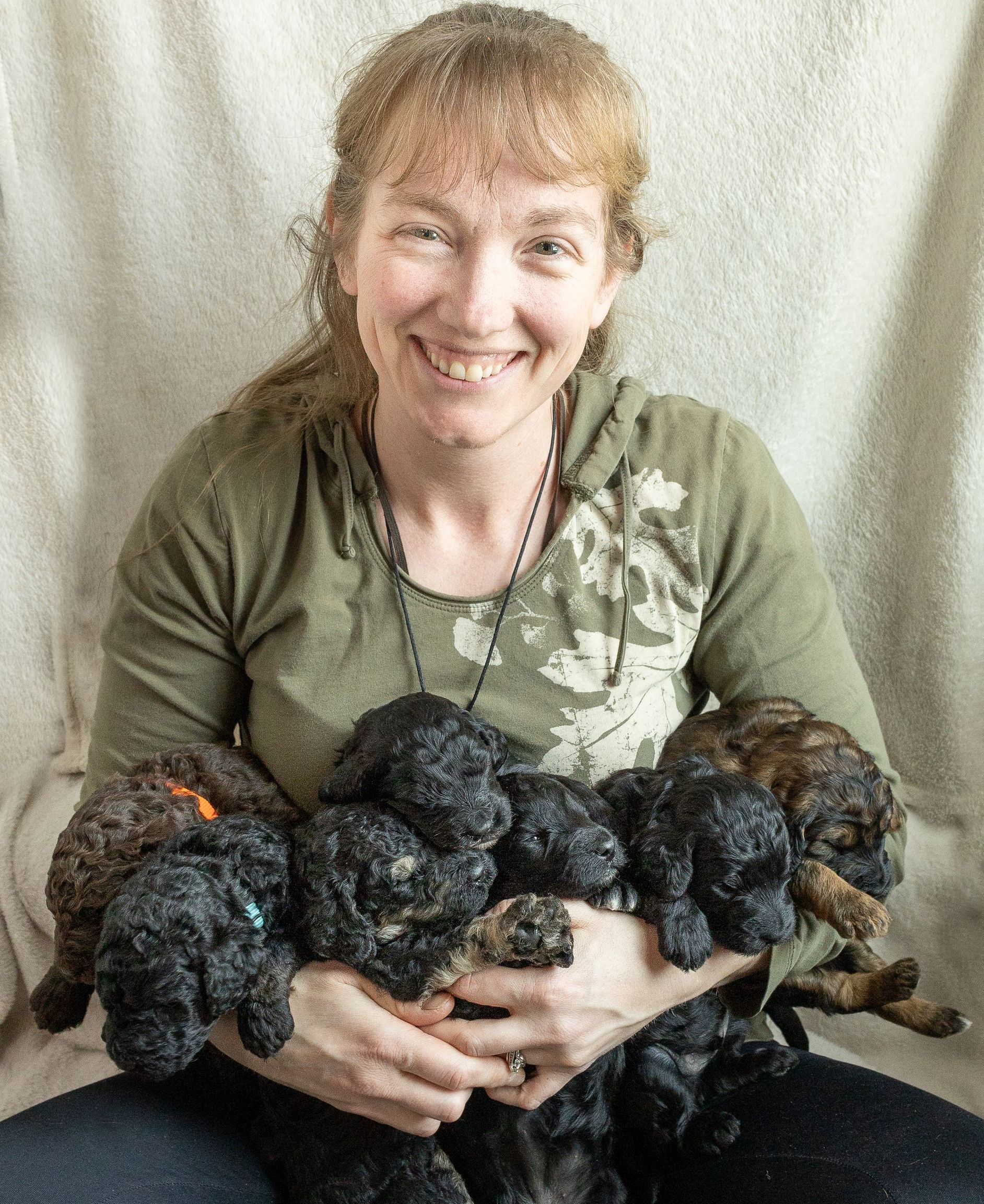Early Neurological Stimulation
Early Neurological Stimulation (ENS) is a process we started doing that introduces mild stresses to very young puppies in a controlled way. These stresses help stimulate the neurological system which improves the growth and development of the pup’s immune system, cardiovascular system, and stress tolerance.
ENS is done for 2 consecutive weeks starting 3 days after the puppies are born. The process consists of 5 simple and harmless exercises, which are: tactile stimulation, lying in the supine position, held with head held up, tilted upside down, and thermal stimulation. Each exercise is done for 3-5 seconds. The entire process takes about 30 seconds. Tactile stimulation is done by gently tickling or touching in between each of the pup’s toes with a Q-tip. The supine position is achieved by holding the pup in both hands belly up (some pups squirm in this position so a solid but gentle two handed hold is necessary). Simply hold the pup in both hands so that the tail is pointed to the ground and the head is above the tail towards the ceiling. From the Head held up position tilt the pup over and hold so the head is towards the ground and the tail is towards the ceiling. You’ll need a damp cool towel for the thermal stimulation. You lay the pup right side up with its belly on the damp cool towel.
These 5 painless and simple exercises are done to prepare our pups for their life’s journey. Only 30 seconds a day for 2 weeks and we see a great improvement in their immune systems and stress tolerances. We will continue to do Early Neurological Stimulation on our pups because we see the benefits and know it helps them grow into lovable canine citizens.
Tactile Stimulation
- Tactile stimulation - holding the pup in one hand, the handler gently stimulates (tickles) the pup between the toes on any one foot using a Q-tip. It is not necessary to see that the pup is feeling the tickle. Time of stimulation 3 - 5 seconds.
- Head held erect - using both hands, the pup is held perpendicular to the ground, (straight up), so that its head is directly above its tail. This is an upwards position. Time of stimulation 3 - 5 seconds.
- Head pointed down - holding the pup firmly with both hands the head is reversed and is pointed downward so that it is pointing towards the ground. Time of stimulation 3 - 5 seconds.
- Supine position - hold the pup so that its back is resting in the palm of both hands with its muzzle facing the ceiling. The pup while on its back is allowed to sleep. Time of stimulation 3-5 seconds.)
- Thermal stimulation—use a damp towel that has been cooled in a refrigerator for at least five minutes. Place the pup on the towel, feet down. Do not restrain it from moving. Time of stimulation 3-5 seconds.
These five exercises will produce neurological stimulations, none of which naturally occur during this early period of life. Experience shows that sometimes pups will resist these exercises, others will appear unconcerned. In either case a caution is offered to those who plan to use them. Do not repeat them more than once per day and do not extend the time beyond that recommended for each exercise. Over stimulation of the neurological system can have adverse and detrimental results. These exercises impact the neurological system by kicking it into action earlier than would be normally expected, the result being an increased capacity that later will help to make the difference in its performance. Those who play with their pups and routinely handle them should continue to do so because the neurological exercises are not substitutions for routine handling, play socialization or bonding.
Benefits of Stimulation
Five benefits have been observed in canines that were exposed to the Bio Sensor stimulation exercises. The benefits noted were:
- Improved cardiovascular performance (heart rate)
- Stronger heart beats,
- Stronger adrenal glands,
- More tolerance to stress, and
- Greater resistance to disease.
In tests of learning, stimulated pups were found to be more active and were more exploratory than their non- stimulated litter mates over which they were dominant in competitive situations. Secondary effects were also noted regarding test performance. In simple problem solving tests using detours in a maze, the non-stimulated pups became extremely aroused, whined a great deal, and made many errors. Their stimulated litter mates were less disturbed or upset by test conditions and when comparisons were made, the stimulated litter mates were more calm in the test environment, made fewer errors and gave only an occasional distress sound when stressed.



